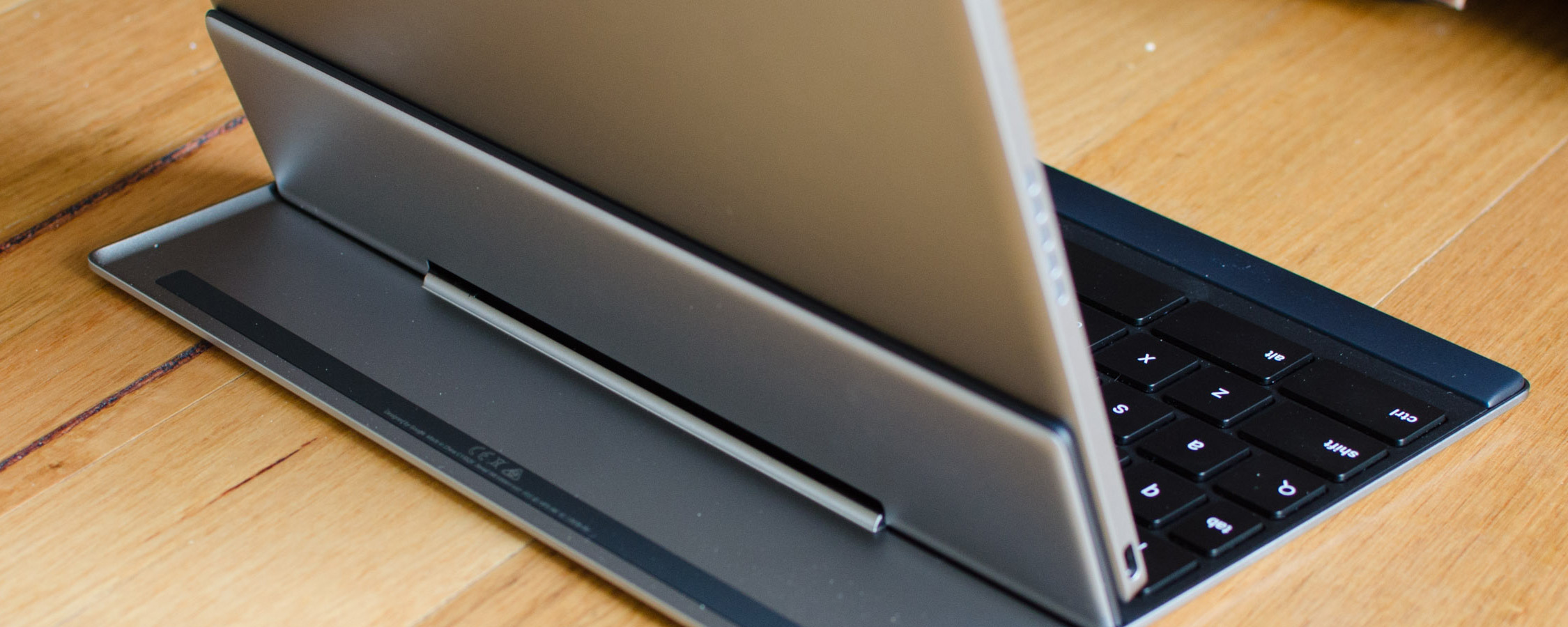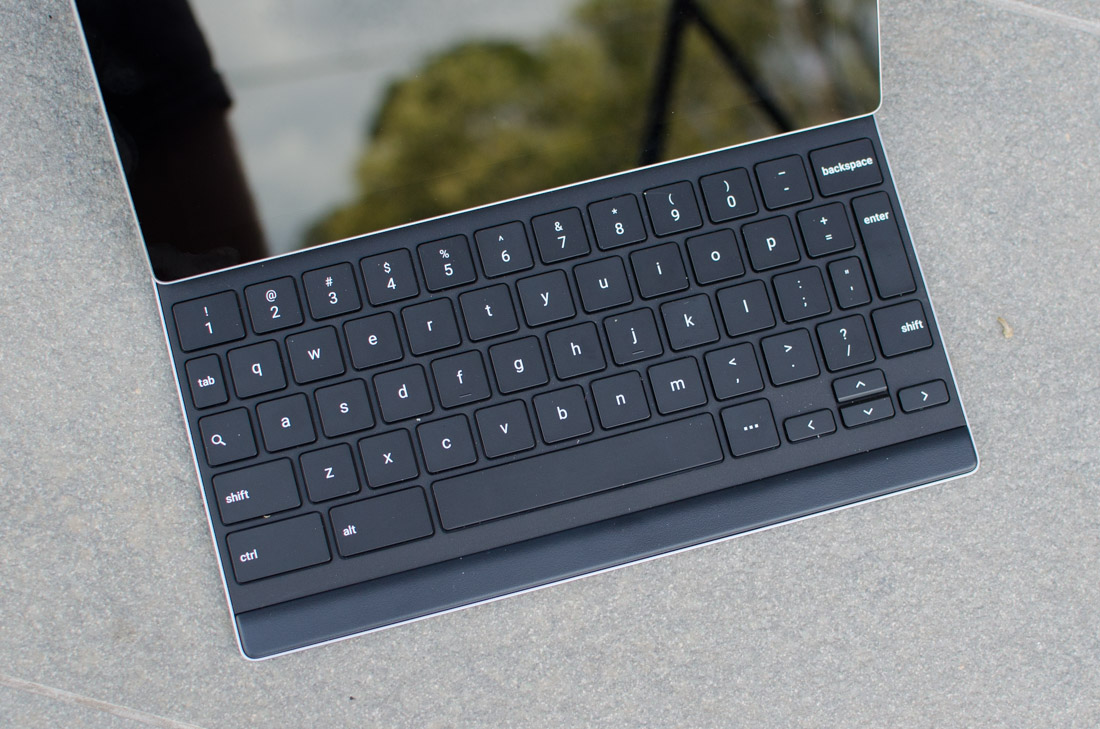The Pixel C as a Laptop
One of the Pixel C's main attractions is its keyboard accessory, which attaches to the tablet via an unusual magnet system. The keyboard is meant to transform the device from a basic Android tablet into a laptop-like machine, capable of editing documents and browsing the web with greater ease than before. But what is it actually like to use the Pixel C as a productivity-focused device?
Well for starters, the keyboard is really weird, both in its design and the way it connects to the tablet. Rather than the tablet simply slotting into the keyboard dock, you first have to magnetically attach the tablet in the correct position, after which you can adjust the position of the hinge. To store the tablet with the display facing down like a laptop, you have to pull the tablet away from the very strong magnets, rotate and flip the unit, then place it face down on the keyboard.
Sounds confusing? That's because it is. Google even acknowledges this fact, and includes a double-sided A4-sized instruction sheet in the box for connecting and disconnecting the keyboard. Seriously, if your product requires a huge set of instructions just for attaching a keyboard, your design needs re-thinking.
One of the better aspects of the keyboard is the way it wirelessly connects to the Pixel C. Provided you have Bluetooth enabled, the connection process is essentially automatic, and wireless charging delivers power from the tablet to the base. Every time I connected the tablet to the keyboard, I was able to type nearly instantly, which surprised me considering how much trouble I usually have quickly establishing Bluetooth connections.
Unfortunately, the connection isn't very reliable. Despite the tablet reporting it was connected for the entire time, often when I typed on the keyboard I saw letters repeat themselves erroneously, or keypresses not registering at all. This isn't a great typing experience at all, and I found myself getting frustrated at not being able to type even basic search entries without the keyboard stuffing something up.
Then there's the issues with the keyboard layout. The spacing and travel distance of each of the main letter keys is acceptable, but some crucial function keys - especially enter, right shift, tab - are too small for comfortable typing. The left control and alt buttons are massive, and the lack of a caps lock key (replaced by an unnecessary search button) doesn't make this a very well thought out keyboard.
Furthermore, there is no way to access any of Android's key navigation functions (Home, Back or Recent Tasks) from the keyboard. You'd think that maybe Google would have included at least a home button in the position of the Windows key on a standard keyboard so you don't need to reach up to the touchscreen to return to home. But no, instead they included a dedicated key that brings up a touchscreen panel displaying symbols they couldn't fit on the keyboard.
And then you'll also notice there's no trackpad... and FYI, Android does support mouse input. Likely a design trade-off since there's no space left on the keyboard dock because of how the tablet attaches to the base. I like using a trackpad to navigate with precision, so its omission on this keyboard is annoying, especially when compared to the Surface Pro keyboard covers that do include one.
There are also a number of issues with Android itself that makes using this tablet like a laptop nearly impossible. No multi-tasking certainly hurts. Every time you want to browse to a different app, you'll need to use the recent apps button, which is usually fine on an entertainment-focused tablet, but on a laptop it's slow and clunky.
The Pixel C's inability to show more than one app on the screen at a time is a downright hindrance when you're trying to be productive. Are you writing a Word document, perhaps a review of a mediocre Google tablet? Well there's no way to browse the web simultaneously. Taking science notes? You can't bring up a calculator at the same time. The list goes on.
Some might say that the Pixel C and Android tablets in general are suited to entertainment, and the OS' strengths lie there. To an extent this is true: there's a great selection of apps and games available on Android, and tablet versions are getting better every year – although the catalog still has some glaring omissions.
However, when you offer a keyboard attachment alongside a well-made Android tablet, transforming the device into a laptop of sorts, I expect to be able to do more than just watch Netflix and play Candy Crush. I expect to be able to do laptop-like tasks, content creation and other work, where the keyboard is really useful. In its current form, Android is not an OS where this is really possible.




